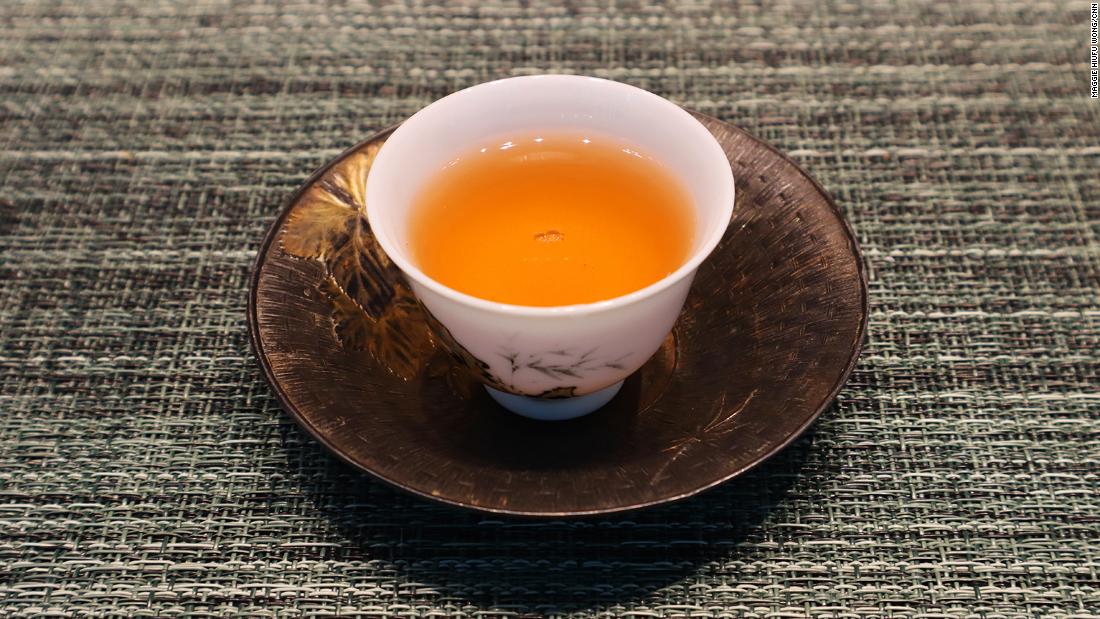But neither the abalone nor the A4 Wagyu ribeye are the stars of the show.
It’s the eight glasses of tea that lure patrons to this dark, wood-paneled space in the city’s busy Causeway Bay neighborhood.
On the left, three shot glasses contain three different varieties of hot tea: plum-scented raw Puerh tea, Gold Needle Dian Hong (a relatively new black tea from Yunnan) and a peat-scented Rougui — a type of oolong rock tea from the Wuyi Mountains in China’s Fujian Province.
On the right, we have ice drip Full Blossom Rougui tea, served in five Riedel glasses.
“Please have a sniff,” says the server. “With the cognac glass, you can get more of the fruit smell. With the Burgundy glass, you pick up more floral flavors.”
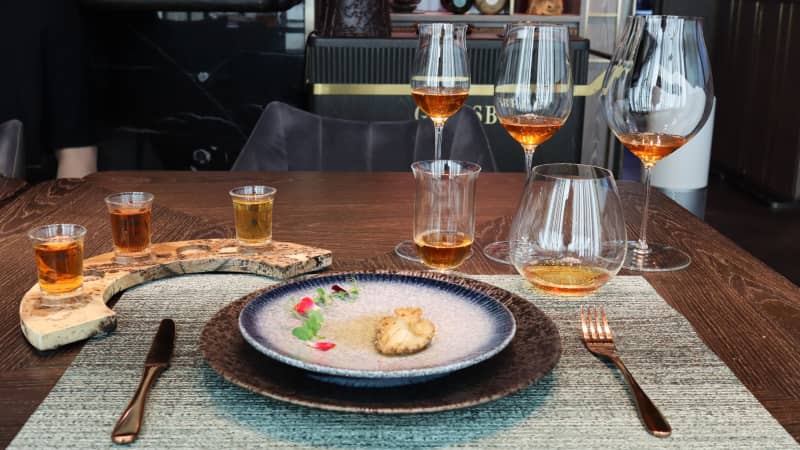
At Glassbelly, a high-end tea pairing restaurant in Hong Kong, Chinese teas are served in wine and liquor glasses.
Maggie Hiufu Wong/CNN
It’s an unusual and modern way of sampling tea. But I’m here on a mission — to find out why just a few handfuls of some types of Chinese tea leaves cost thousands of dollars.
Glassbelly specializes in oolong rock tea from Wuyi, which is one of the priciest tea varieties on the planet. It’s a specific kind of oolong tea that grows on rocks on eastern China’s Wuyi Mountains — hence the name, “rock tea.”
Famous rock tea varieties from this area include Rougui, Da Hong Pao and Shui Xian — which translates to Cinnamon, Big Red Robe and Narcissus, respectively.
Glassbelly’s most prized item is the Niu Lan Keng Rougui, a rare variety of Rougui tea from a valley brook of the same name in the Wuyi Mountains.
The retail price? HKD36,000 ($4,560) for 25 grams, or $184,615 for a kilogram, at the time of writing. Enjoying one brew of the tea at the restaurant costs HKD28,000 ($3,577).
To put this into context, a small 150-200 ml pot of tea is usually made with about five grams of tea leaves.
Tea auctions
Rare teas have long been commanding sky-high prices in China. This isn’t a new trend.
In 2002, 20 grams of Da Hong Pao — also a Wuyi Mountain tea, once reserved for the emperor’s lips only — was auctioned for RMB180,000 ($28,000) in Guangzhou.
In 2009, a 100-gram Taiping Houkui (green tea from Anhui) was auctioned for RMB200,000 ($31,300) in Jinan.
Initially, I set out solely to find out why these teas continue to come with such high price tags. But during my research I discovered just how wonderful, secretive and complex the Chinese tea world really is — and met some new players on the scene who are making bold moves to shake things up.
Making sense of Chinese tea
First, let’s start with the basics. There are six main types of Chinese tea: green, white, yellow, oolong, black tea and dark tea.
Each of them is categorized by how the leaves are processed and how long they are fermented. (Green tea is unfermented while dark tea is double fermented.)
Under each category, there are different varieties of teas named for a number of reasons. It could be the location it was harvested. Puerh tea, for example, can only come from certain places in Yunnan.
The leaves are important as well. Lapsang Souchong uses the entire tea leaf while Jin Jun Mei uses only the buds of the leaves.

Glassbelly says that boiling water in a silver pot helps ionize it, making the tea silkier.
Maggie Hiufu Wong/CNN
This a surprisingly challenging question to answer in spite of the fact tea is one of the most popular beverages in the world.
“A major problem with Chinese tea is that there is no subjective answer to what good tea is. There are many sentimental stories and artistic elements when it comes to selling tea, but so little about the actual flavors of the tea,” says Yeung, who has worked in the wine industry as well, specializing in Burgundy.
“If you look at wine and coffee, both are plant-derived beverages that have been doing so much better than Chinese tea in the commercial market.”
Lack of a widely recognized system
The lack of a well-recognized standardization system contributes to the pricing confusion.
Compared to wine or coffee, the market is less transparent, making it harder for consumers to know how much a particular type of tea should cost and why.
Yeung claims that her team has poured HKD40 million (around $5 million) worth of tea in pursuit of finding an answer to that question in the last decade, leading them to open Glassbelly in 2021.
The name Glassbelly was inspired by an ancient Chinese semi-mythological character, Shennong (the Divine Farmer).
According to legend, Shennong had a translucent belly. To help the world test the usage and toxicity of vegetation, Shennong would sample every herb he came across and record how it changed in his body, including tea.
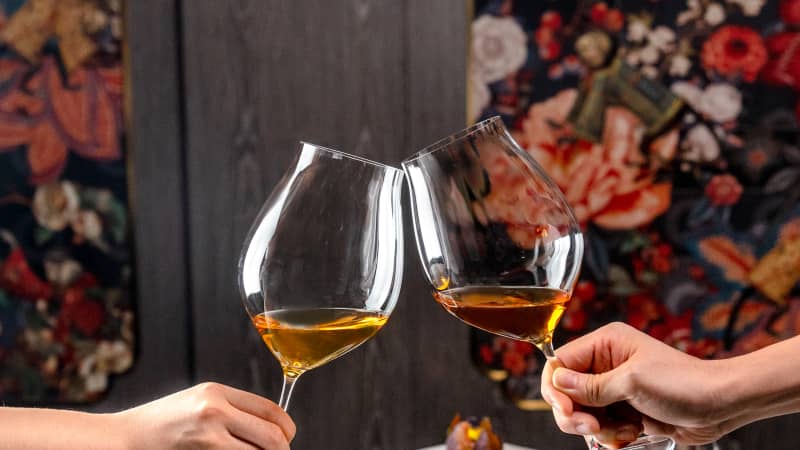
Glassbelly takes a scientific approach to its tea pairings.
Courtesy Glassbelly
Yeung hopes that her Glassbelly restaurant will help shine some clarity on the market, thanks to its modern and scientific approach to tea.
“The tea industry may have changed but the selling technique was stuck like it was 1,000 years ago. There were a lot of hushed business talks and secret deals,” says Yeung.
Her comments ring true. Several years ago, I took a taxi ride in the city of Wuyi at night. The driver, knowing I was a tourist, slowed down his car to around 20 kilometers per hour, giving him more time to attempt to convince me he had some secret connections who would help me score some Da Hong Pao tea at a good price.
He was just one of several people who tried to sell me tea on that trip.
“Everyone in Wuyi would try to sell you the ‘authentic Da Hong Pao’ but there are only six mother Da Hong Pao trees — and they aren’t for sale. Authentic Da Hong Pao bred solely from the original trees is also very limited. So it’s very hard to find out whether a tea is what the seller claims it is,” says Yeung.
“We’ve had sums of money spent on exclusive ‘high-end’ tea leaves that turned out to be horrible. We learned along the way.”
The flavor wheel
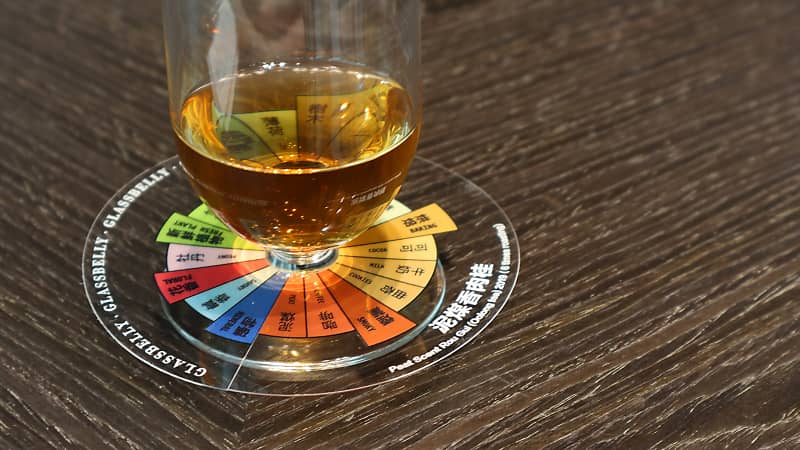
Glassbelly’s flavor wheel.
Maggie Hiufu Wong/CNN
After a decade of traveling between Hong Kong and mainland China — mostly to Wuyi Mountain — Yeung has accumulated thousands of tasting notes to develop Glassbelly’s version of a flavor wheel for Chinese tea.
“Wuyi tea is the Burgundy of tea, with so much complexity. It is what the industry calls a ‘raw tea’ (not fully fermented) so it keeps changing in your glass as well as in your mouth,” says Yeung.
Rock teas contain over a dozen types of flavor profiles but there are a few your taste buds should be looking for — citrus, sandalwood and cinnamon.
One Glassbelly workshop invites patrons to compare raw and aged Puerh tea, which is highly prized among tea connoisseurs.
“Raw Puerh tea smells like plum. Aged Puerh tea often comes with the smell of camphor mothballs and old newspaper, which some would say is normal. But if you sample it objectively by taste, your body will naturally repel these smells. I think it is a good sign that it isn’t a good tea, like what marketers have been claiming,” says Yeung.
“It’s the smell of a Puerh tea aged in an unnatural way — by adding humidity to speed up its aging process. It is an accepted practice in the industry but doesn’t mean it is good.”
This contrasts the many long-held beliefs in the market that aged Puerh is mild on one’s body, while raw Puerh is shunned as too “cold” and harmful to one’s stomach, according to traditional Chinese medicinal wisdom.
The untold truth
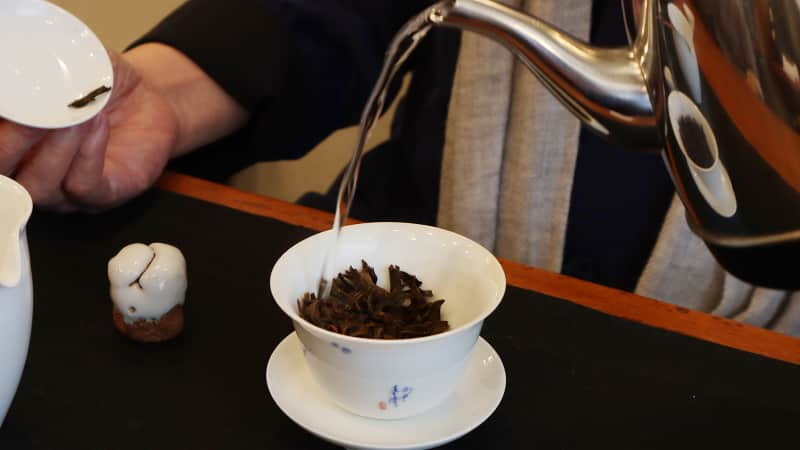
Puerh tea is another highly prized Chinese tea in the market.
Maggie Hiufu Wong/CNN
Glassbelly’s contrarian views have raised a few eyebrows in the industry.
But, Yeung says, “truth is always controversial. Controversy makes people reflect and think. Cultural progress usually comes after controversy.”
Wanting to dig more into Glassbelly’s claims, I approached respected Puerh tea collector, Raymond Ray.
“I totally admire their outspokenness. So gutsy,” gasps Ray. “They actually said something not many in the industry are willing to say.
“But I’d say, good raw Puerh tastes like more than just plum. And not all aged Puerh is bad — only those that aren’t aged in a natural way, which is quite common.”.
The story behind Ray’s rise in the Hong Kong tea industry has made him a bit of a legend. About a decade ago, he fell sick from a spine disease, leaving him temporarily immobile.
A long-time wine lover, Raymond remembers taking his first sip of a good rock tea.
“It was like my tongue was coming back to life again. I now had something to live for,” recalls Ray. With a sore back and weak legs, he traveled around Yunnan in search of the best Puerh tea.
“Some historians have confirmed that Yunnan is the origin of tea,” says Ray. “I would sit in a car for a four-hour rugged journey to the mountains, then walked with a cane with my bad back.”
That’s where he got acquainted with the area’s many small Puerh farms.
“You know, really good tea comes from old trees. When it can grow organically with roots big and strong enough that they don’t need any chemicals and fertilizers. Farmers will have to climb up the tree to handpick these leaves,” says Ray.

Raymond Ray, founder of Yuencha Land, says that drinking Puerh tea has restored his once-frail health.
Maggie Hiufu Wong/CNN
“I think everyone should find a tea that’s good for their bodies. Puerh is what works for me,” says Ray, who credits the drink with restoring his health.
Marketing, rarity and tastes
Much of the problem with artificially aged Puerh dates back to the post-WWII period.
Once a tea served to emperors, Puerh lost its luster over time. It was even dubbed “coolie tea” in the Canton area, suggesting it was a drink reserved for low-income workers.
Rather than aging it and letting it ferment naturally, sellers relied on the humidity in the Canton area to accelerate the process, which intensified the flavors. New techniques were developed to add extra moisture to the leaves and developing cultures to further speed things up.
The resulting musty, camphor smell became the signature of aged Puerh.
Today, there are different schools of thought attached to Puerh tea and its often high price tags, like with other Chinese teas.
“It is hard to untangle the history behind it,” says Ray. “Marketing definitely plays an important role in many of these record-breaking prices.”
Rarity is another factor, not just for Puerh tea but all varieties.
Some of the tea is so rare that there is no price tag — the leaves are not for sale. For example, the original Da Hong Pao trees are state-protected. meaning they aren’t harvested for commercial purposes.
“There is also a price for commercial tea and another price for artisanal tea. It’s like the difference between house wine and collectors’ wines,” says Yeung.
What makes a tea good?
For customers sampling these high-end brews, Yeung has an important reminder.
“Have a piece of food, or you will get tea drunk,” she says.
Tea has a similar effect as alcohol, but with arguably fewer side effects. Consuming too much tea can make one relax and feel light-headed: tea drunk.
“Tea helps expand your palette during a meal. So I’d argue it is a more suitable drink to pair with food than coffee and wine. Your tongue will be more sensitive as you drink tea,” says Yeung.
According to both Ray and Yeung, the senses will play an increasingly important role in the future of tea as more people disregard the classic tales and marketing techniques, purely wanting to pursue the all-important question — how should a good tea taste?
“I’d look into these six categories: color, fragrance, taste, aftertaste, chi and nature,” says Ray.
“The latter two are more abstract. Chi is the liveliness and complexity of a tea — how it will change in your mouth, whereas nature is how the tea reacts with your body,” says Ray.
Yeung doesn’t give me an answer right away. Instead, she goes into the kitchen and returns with a server and a pot of tea leaves.
Water boils in a vintage silver pot — which is said to boost the ion in the water and make the water’s texture silkier.
The tea is brewed in a violet clay pot that helps keep the leaves warm. Once the temperature drops, the leaves will contract and release fewer flavors.
The brewing is quick. The tea, a clear red hue, is poured out almost as soon as the pot is filled.
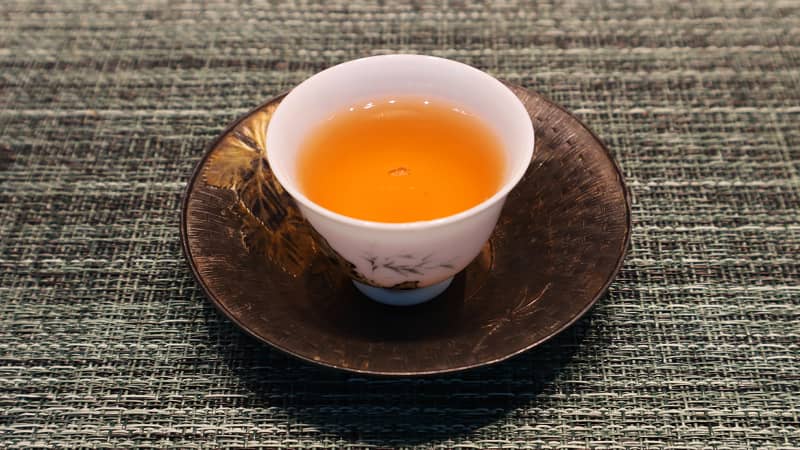
Consuming too much tea can make one feel light-headed.
Maggie Hiufu Wong/CNN
“Drink it. This is the Niu Lan Keng Rougui,” says Yeung. She gathers the team around to have a sip of the next brews. (A batch of good tea leaves can be brewed up to 10 times on average.)
“We don’t brew a Niu Lan Keng Rougui every day so everyone is excited,” she says with a smile, pouring about HKD28,000 (or $3,577) worth of tea into everyone’s mini tea cups.
The first sip numbs the tongue. Then the flavors of the citrus and the wood we sampled earlier come in slowly but in a much more condensed and gentle form.
“It should be clear, fragrant, ‘gan,’ harmonious and alive — it changes on your tongue,” says Yeung.
Gan, often translated as sweet, is a Chinese word that describes a specific kind of sweetness and freshness that’s accompanied by a hint of bitterness.
We grow quiet for a moment, trying to focus on the long aftertaste of the complex tea.
“I think this is how a good tea should taste. And here’s what you were looking for — the answer to why tea could cost so much,” says Yeung. “But much great tea is still cheaper than a bottle of fine Burgundy. So is it expensive, really?”
Top image: Priced at $4,560 per tin can (25 grams), Niu Lan Keng Rougui is one of the most expensive Chinese teas on the market. Credit: Glassbelly Tea Lab
